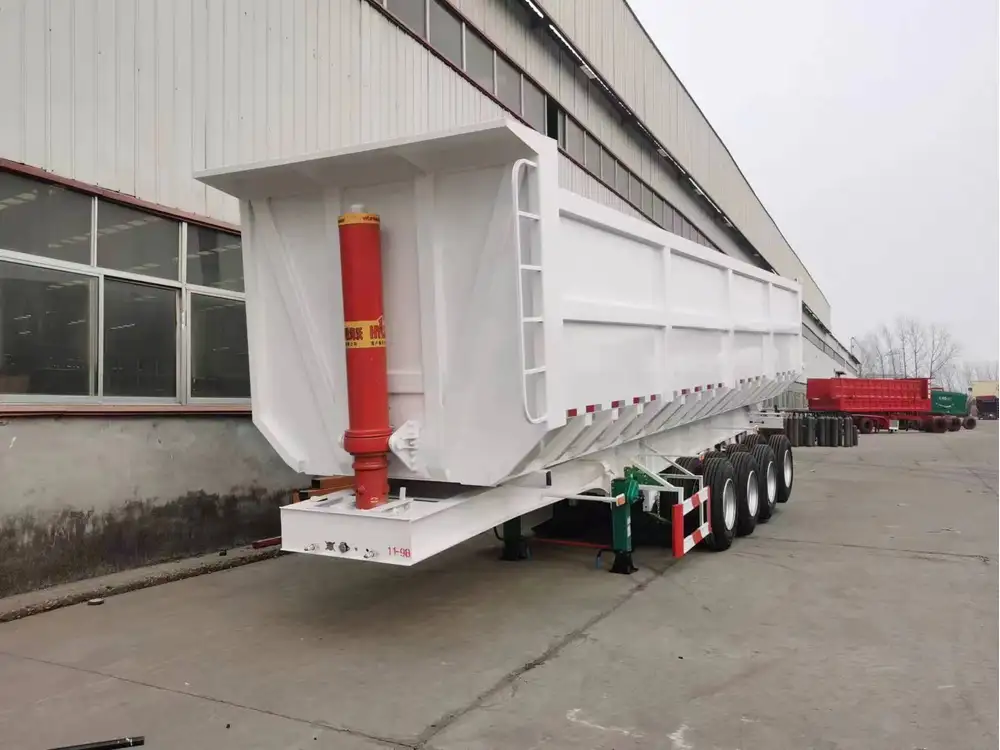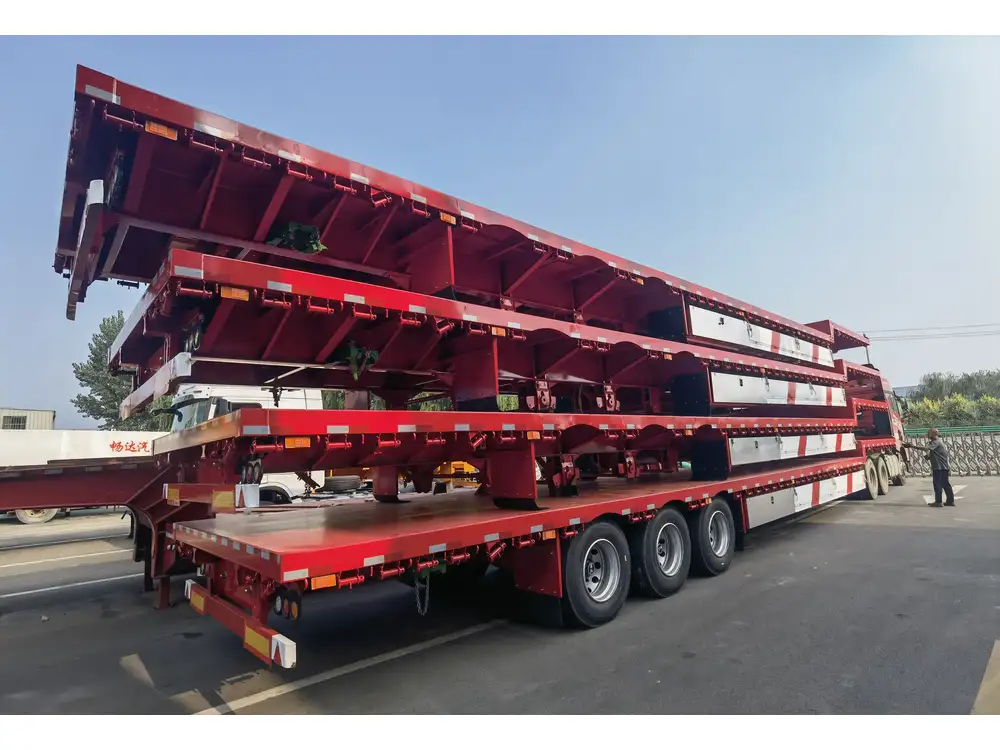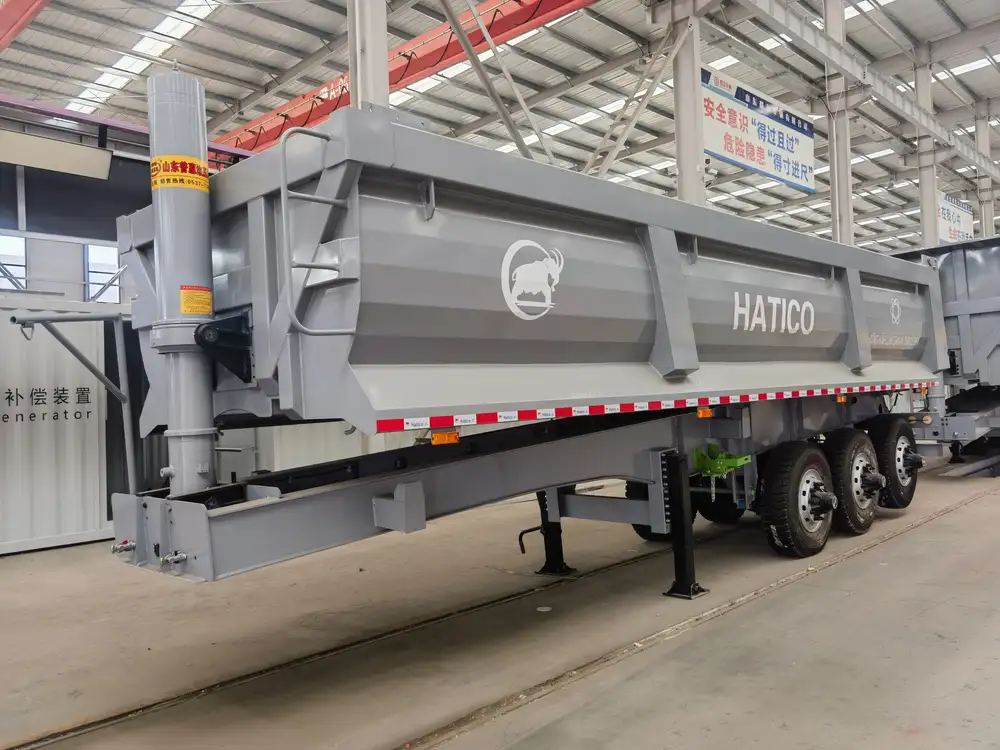Building a flatbed trailer is an intricate process that combines engineering precision, quality materials, and a deep understanding of the intended use. This article delves into the various aspects essential for constructing a robust and reliable flatbed trailer. From selecting materials to adhering to safety standards, we will cover everything you need to know.
Understanding the Basics: What Is a Flatbed Trailer?
A flatbed trailer is a versatile vehicle designed for transporting goods and materials. Unlike enclosed trailers, flatbeds offer an open platform that provides easier loading and unloading options, making them ideal for carrying oversized items, machinery, and construction materials.
Key Components of a Flatbed Trailer
Before diving into the construction process, it’s crucial to familiarize ourselves with the essential components that make up a flatbed trailer.
| Component | Description |
|---|---|
| Frame | The skeleton that provides structural integrity; usually made of steel or aluminum. |
| Decking | The surface area where cargo is placed; can be wood or metal. |
| Axles | Components that create the wheels’ rotation; selecting the right axle rating is critical. |
| Wheels and Tires | These enable movement; wheel size can affect the trailer’s load capacity. |
| Coupler | The mechanism that connects the trailer to a towing vehicle. |
| Ramps | Optional components that aid in loading and unloading. |
| Lighting | Essential for safety; includes brake lights, turn signals, and reflectors. |

Step 1: Determine Your Needs
Before beginning the construction, clarify the specific requirements your flatbed trailer must meet. Consider the following factors:
- Intended Use: Will this trailer be used for commercial transport, personal use, or specialized applications?
- Weight Capacity: Decide on the maximum weight the trailer will need to carry. This impacts the choice of materials and design.
- Dimensions: Determine the length, width, and height based on your transportation needs and legal requirements.
Load Capacity Considerations
| Capacity Type | Description |
|---|---|
| Gross Vehicle Weight Rating (GVWR) | The total weight the trailer can safely carry, including its own weight. |
| Payload Capacity | The maximum weight of the cargo alone that can be safely transported. |
| Tare Weight | The weight of the empty trailer. |
Step 2: Designing the Trailer
Creating a detailed design blueprint is essential for ensuring that your flatbed trailer meets all requirements and specifications.

Sketch the Layout
Start by sketching the overall trailer dimensions and layout. Consider employing computer-aided design (CAD) software for precision. Your design should include:
- Frame structure
- Axle placements
- Wheel well dimensions
- Location of tie-down points
Choose Materials Wisely
Selecting the appropriate materials impacts both the weight and durability of the trailer. Common materials include:
- Steel: Offers high strength and weight-bearing capacity but is prone to rust.
- Aluminum: Lightweight and resistant to corrosion, making it ideal for weight-sensitive applications.
- Wood: Often used for decking, hardwood is preferred due to its strength and durability.
Step 3: Fabricating the Frame
The frame serves as the backbone of the flatbed trailer and must be fabricated with precision.

Materials for the Frame
| Material | Advantages | Disadvantages |
|---|---|---|
| Mild Steel | High strength, economical | Heavier, requires painting or coating to prevent rust |
| High-Strength Steel | Lighter and provides better yield strength | More expensive, may be harder to work with |
| Aluminum | Lightweight, rust-resistant | Lower strength-to-weight ratio |
Frame Design Process
- Cutting and Welding: Use a cutting torch or saw to produce frame pieces based on your design. Then, employ welding techniques to assemble the frame securely.
- Bolting vs. Welding: Determine whether to bolt joints or weld them. Welding provides a stronger connection but can be more challenging to repair if needed.
Step 4: Adding the Axles and Suspension
Proper axle selection affects handling, safety, and load capacity.

Types of Axles
| Type | Description |
|---|---|
| Single Axle | Generally used for lighter loads; cost-effective. |
| Tandem Axle | Provides greater load capacity; enhances stability. |
Suspension Systems
Choosing the right suspension system ensures smoother transport and increased stability. Options include:
- Leaf Spring Suspension: Cost-effective and simple to maintain.
- Air Ride Suspension: Offers superior cushioning, ideal for expensive cargo.
Step 5: Installing the Decking
Decking material must support the intended load. Here are popular choices:
| Decking Material | Advantages | Disadvantages |
|---|---|---|
| Pressure-Treated Wood | Cost-effective, easy to replace | Susceptible to rot and wear over time |
| Steel Plate | Extremely durable, low maintenance | Heavy, can rust if not treated |
| Aluminum Planks | Lightweight, corrosion-resistant | More expensive, can dent under heavy loads |

Decking Installation
- Cutting: Measure and cut the decking material to fit the frame.
- Securing: Attach the decking securely to prevent any shifting while in transit.
Step 6: Installing the Coupler, Ramps, and Lighting
Coupler Installation
The coupler connects the trailer to the towing vehicle. Choose a coupler type based on the size of the towing vehicle’s hitch. Follow these steps for installation:
- Placement: Position the coupler at the front of the trailer frame.
- Welding/Bolting: Attach it securely using either welding or heavy-duty bolts.

Ramp Installation
If your flatbed trailer is expected to carry heavy equipment, consider adding ramps:
- Design: Ensure ramps are sturdy enough to support the equipment’s weight.
- Hinge Design: They can be fixed or foldable for easy storage.
Lighting and Safety Features
Proper lighting is essential for safety on the road. Install LED lights for energy efficiency and visibility:
- Brake Lights: Essential for signaling stops.
- Turn Signals: Required for safe lane changes.
- Reflectors: Added for visibility in low-light conditions.
Step 7: Finishing Touches and Safety Features

Painting and Coating
A durable paint job enhances your trailer’s lifespan by protecting it from the elements:
- Rust Prevention: Use primers designed to combat rust.
- UV Protection: Make sure to apply a topcoat that resists fading.
Safety Features
Incorporate safety features to protect both the load and the vehicle:
- Tie-Down Points: Strategically place D-rings or tie-down bars for securing cargo.
- Breakaway Brake System: Essential for ensuring safety in case the trailer becomes disconnected.
Quality Control
Before the first use, conduct a thorough inspection. Check:
- Frame integrity
- Wheel and tire conditions
- Lighting functionality
- Load capacity calculations

Step 8: Registration and Legal Compliance
Verify that the flatbed trailer meets local and federal regulations. Register the trailer according to your state’s guidelines and obtain necessary permits. This process may include:
- Filing for a Vehicle Identification Number (VIN).
- Ensuring adherence to weight limits and safety standards.
Conclusion
In constructing a flatbed trailer, attention to detail, quality material selection, and adherence to safety regulations are paramount. By following the structured approach outlined in this guide, manufacturers can produce reliable and efficient flatbed trailers that cater to varied transportation needs. Whether your focus is on commercial transport or specialized applications, understanding each component’s role in construction ensures a successful outcome. Invest time in planning, design, and execution, and your flatbed trailer will stand the test of time and function efficiently in diverse environments.
Consider this guide your roadmap to building the best flatbed trailer that meets performance, safety, and durability standards, ultimately leading to customer satisfaction and potential for repeat business.



